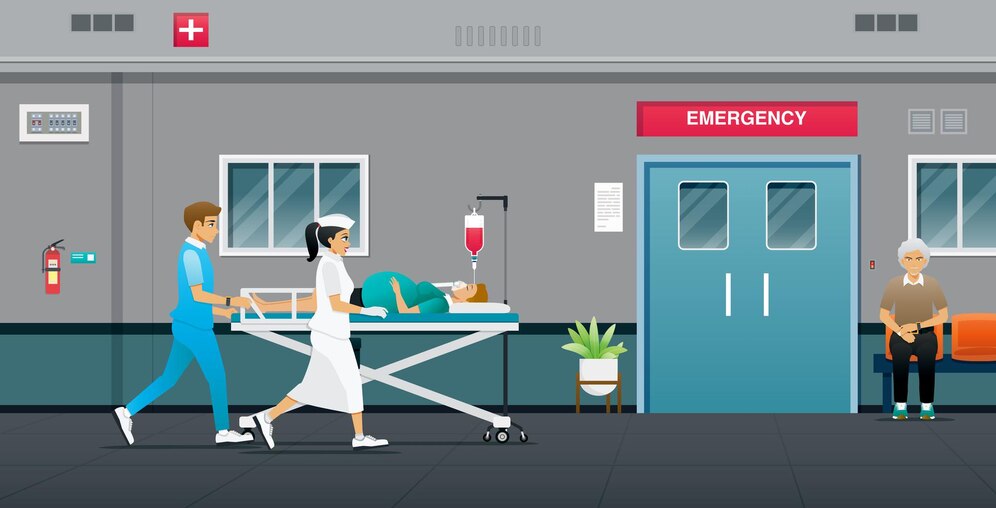

By Haley Holmes
Sep 28, 2023
Table Of Contents
What is an emergency room scribe?
An emergency room scribe is a crucial member of the patient care team, handling all of the documentation and enabling ER physicians to have a more productive and satisfying experience at work. An ER scribe is a specialized scribe who works in an emergency room setting and provides documentation support to ER physicians working in highly stressful, fast-paced environments. They are specially trained in the medical terminology, common ED diagnoses and workups, charting methods, and the functionality of ER to accurately document patient data. Having an ER scribe facilitates efficient patient care by allowing ER physicians to focus on patient’s acute needs rather than inputting patient data.
What experience does an Emergency room scribe need?
The minimum requirement to become an ER medical scribe is to complete a high school diploma. However, candidates with a bachelor’s degree in a healthcare-related field are usually preferred. A minimum of 1 to 2 years of prior experience in healthcare documentation is mandatory. A medical scribe training, certification and specialty experience in EHR documentation would give you an edge over other candidates.
What is the role of an emergency room scribe?
Real-time documentation: ER scribes document patient medical histories, chief complaints, physical examinations, procedures, diagnostic tests, treatment plans, and outcomes in electronic health records (EHR) systems. This helps maintain accurate and up-to-date patient records.
Communication: The ER scribe communicates with the medical team to clarify information, follow-up on orders, and relay important updates about patients.
HIPAA Compliance: Scribes strictly adhere to patient privacy and confidentiality regulations outlined by the Health Insurance Portability and Accountability Act (HIPAA), especially when documenting sensitive medical information.
Efficiency and Accuracy: ER scribes document patient encounters quickly and accurately as speed is essential in the emergency room setting.
Medical Knowledge: They need to be familiar with medical terminology, common emergency conditions, and procedures to accurately document patient information.
Time Management: Scribes help ER physicians manage time more efficiently and effectively by handling documentation.
How does an Emergency room scribe elevate your practice?
The primary goal of an ER scribe is to assist ER physicians in delivering efficient and effective care through expert documentation. This allows ER physicians to focus on critical medical decisions and interventions, ultimately improving patient outcomes in emergency situations. Medical scribes in the emergency department have been shown to improve patient throughput, provide more accurate documentation capture, and enhance provider-patient satisfaction. By taking on the administrative burden they reduce ER physician burnout, improve patient experience and reduce wait times and LWOTs. Moreover, use of scribes in an ED setting increases number of patients seen per hour by improving physician productivity. To sum up, improving emergency department efficiency and productivity has been a top priority in hospitals across the US. A cost-effective and evidence-based solution to address this issue is to use an ER medical scribe.
Conclusion
Emergency room scribes make sense in fast-paced and critical emergency department settings. Are you an ER physician looking to improve efficiency and elevate the quality of patient care? Look no further than Scribe4Me. Over the past 15 years we’ve built a talented and experienced team of ER virtual scribes well-versed in medical terminology and procedures specific to the ER. They are also familiar with the medical slang and jargon that ER physicians use, ensuring accurate charts. Sounds impressive? Well, if you would like to give our ER scribes a try, ask for our free trial today! Call (908)736-4180.

Please fill out this form.
We will reach out to you within 24 hours

Haley Holmes

Haley Holmes

Documentation is an important daily clinical responsibility. In order to optimize patient care, physicians are always on the lookout for new ways to effectively and efficiently document patient visits.
The use of virtual medical scribes has become increasingly popular in the recent years, as medical practices across the country are on the constant lookout for ways to reduce clinical documentation overload, thereby improving overall productivity.
The clerical burden associated with EHR usage is attributed as the number one cause of physician burnout. We also know that physicians spend twice as much time on EHRs and other clerical tasks compared to the time providing patient care.